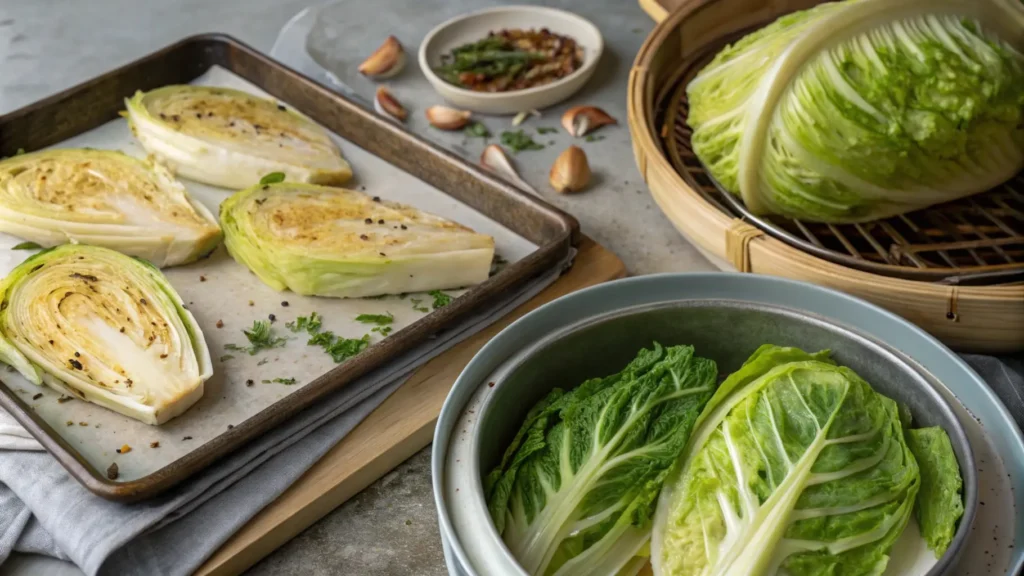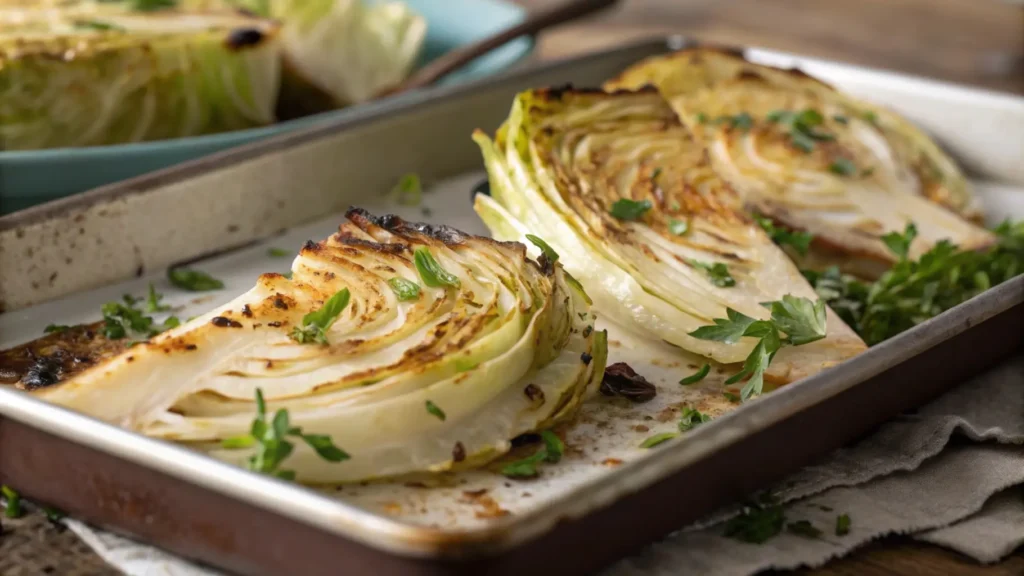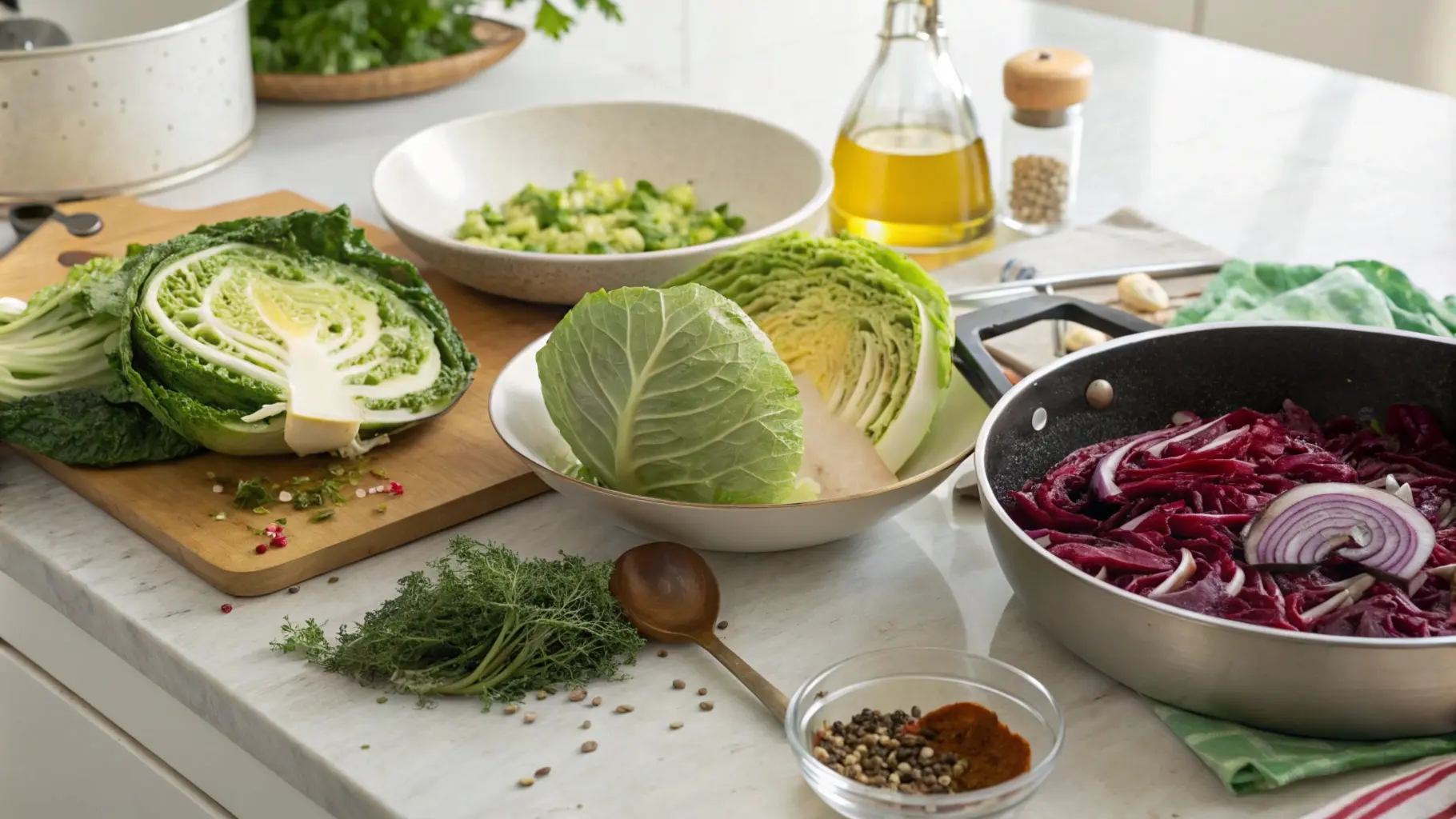Cabbage, a versatile and nutrient-rich vegetable, is a staple in kitchens around the globe. Whether you’re boiling, roasting, sautéing, or fermenting it, cabbage transforms in taste and texture with every cooking method. This article delves into what is the best method of cooking cabbage by exploring various techniques, their unique benefits, and tips to get the best results. From preserving its crunch to unlocking its natural sweetness, you’ll learn how to turn this humble veggie into a flavorful masterpiece. Let’s dive in!
Introduction to Cooking Cabbage
Nutritional Benefits of Cabbage
Cabbage is a powerhouse of nutrients, offering vitamins C and K, fiber, and antioxidants. This leafy green has been linked to boosting immunity, improving digestion, and even reducing inflammation. It’s low in calories but high in health benefits, making it a favorite among health-conscious eaters. Choosing the right cooking method ensures you preserve its essential nutrients while enhancing its taste.
Why Choose the Best Cooking Method?
Not all cooking methods are created equal. Some techniques bring out cabbage’s natural sweetness, while others highlight its earthy flavors or add a pleasant crunch. Picking the best method for cooking cabbage depends on your preferences, the recipe you’re following, and the health benefits you aim to retain. A well-cooked cabbage can turn a mundane meal into a memorable dish!
Overview of Cooking Techniques for Cabbage

Cabbage can be boiled, steamed, sautéed, roasted, or even fermented. Each technique offers a unique texture and flavor profile. Boiling makes it tender and mild, while roasting adds a caramelized sweetness. Sautéing keeps it crisp and flavorful, and steaming locks in nutrients. Fermentation transforms cabbage into tangy sauerkraut, perfect for gut health. Let’s explore each method to uncover the best way to cook cabbage that suits your taste and needs.
Boiling Cabbage: The Classic Approach
How Boiling Answers What is the Best Method of Cooking Cabbage?
Boiling cabbage is one of the easiest and most traditional methods to prepare this vegetable. To start, remove any damaged outer leaves, then chop the cabbage into wedges or slices. Bring a pot of water to a boil, adding a pinch of salt for flavor. Place the cabbage into the boiling water and let it cook for 5–10 minutes, depending on how tender you want it. Drain the water and season the cabbage with butter, salt, or your favorite spices for a simple yet delicious dish.
Pros and Cons of Boiling Cabbage
Boiling is a go-to method for many because it’s quick and requires minimal effort. It softens cabbage, making it perfect for soups, stews, or mashed dishes. However, this method can cause the loss of some water-soluble nutrients, such as vitamin C. Additionally, boiling for too long can lead to an overly soft or mushy texture, which might not appeal to everyone. Despite these drawbacks, boiling remains a convenient way to cook cabbage for beginners.
Retaining Flavor and Nutrition While Boiling
To preserve the nutrients and enhance the flavor of boiled cabbage, avoid overcooking it. Keep the cooking time short and use the boiled water as a base for soups to retain the lost nutrients. Adding herbs like thyme or bay leaves during boiling can elevate the taste, making your cabbage flavorful and aromatic. When considering what is the best method of cooking cabbage, boiling holds its own for simplicity and versatility.
Steaming Cabbage: A Healthy Option
Is Steaming the Best Method of Cooking Cabbage?
Steaming cabbage is an excellent choice for those who want to retain its nutrients. Begin by chopping the cabbage into even pieces to ensure uniform cooking. Use a steamer basket or a colander over a pot of boiling water, ensuring the cabbage doesn’t touch the water. Cover with a lid and steam for 5–8 minutes until it’s tender yet slightly crisp. Season with olive oil, lemon juice, or a sprinkle of herbs for added flavor.
How Steaming Preserves Nutrients in Cabbage
Unlike boiling, steaming keeps most of the vitamins and minerals intact since the cabbage doesn’t come into direct contact with water. This method also helps retain the cabbage’s natural vibrant color and crunch. If you’re trying to figure out what is the best method of cooking cabbage, steaming is ideal for health enthusiasts who prioritize nutrient preservation.
Flavors That Complement Steamed Cabbage
Steamed cabbage has a mild, slightly sweet taste that pairs well with bold flavors. Toss it with garlic butter, soy sauce, or a dash of vinegar for a tangy kick. For a more filling dish, combine steamed cabbage with roasted vegetables or grilled chicken. This method is not only healthy but also versatile, making it a favorite among clean eaters.
Sautéing Cabbage for Maximum Flavor
Simple Sautéing Techniques
Sautéing cabbage is perfect when you’re craving bold flavors and a crisp texture. To start, shred or chop the cabbage into thin slices. Heat a skillet over medium heat and add a tablespoon of oil or butter. Toss in the cabbage and stir frequently to ensure even cooking. After about 5–7 minutes, the cabbage will turn slightly golden and caramelized, adding a touch of sweetness. Sprinkle in some salt, pepper, or spices for a quick and tasty dish.
Popular Spices and Ingredients for Sautéed Cabbage
One of the best things about sautéed cabbage is how well it absorbs flavors. Add garlic and onions for depth, or spice it up with paprika, chili flakes, or cumin. For a hint of freshness, toss in lemon juice or zest just before serving. Adding a protein like bacon or sausage can elevate sautéed cabbage into a satisfying main dish. When you wonder what is the best method of cooking cabbage for bold flavors, sautéing is a top contender.
Best Oils for Cooking Cabbage
Choosing the right oil can make all the difference. Olive oil adds a rich, fruity taste, while butter offers a creamy finish. For higher heat, opt for grapeseed or avocado oil. Each oil imparts a unique flavor, enhancing the versatility of sautéed cabbage. Experiment to find your favorite pairing and make your dish unforgettable.
Roasting Cabbage: Bringing Out the Sweetness

How to Roast Cabbage to Perfection
Roasting cabbage transforms its natural sugars, creating a caramelized, nutty flavor. Begin by slicing the cabbage into thick wedges or rounds. Preheat your oven to 400°F (200°C). Drizzle the cabbage with olive oil and season it with salt, pepper, and optional herbs like rosemary or thyme. Place the cabbage on a baking sheet and roast for 20–25 minutes, flipping halfway for even browning.
Why Roasting Enhances Flavor
Roasting cabbage unlocks a depth of flavor that other methods can’t replicate. The high heat browns the edges, creating a crispy, slightly sweet exterior while maintaining a tender inside. This technique is ideal if you want to impress guests with minimal effort. If you’re exploring what is the best method of cooking cabbage for an indulgent side dish, roasting is a must-try.
Best Oven Settings for Roasting Cabbage
To achieve perfect results, keep your oven settings consistent. Use the convection mode if available, as it circulates hot air for evenly roasted cabbage. Keep the cabbage spaced out on the tray to prevent steaming, and don’t overcrowd the pan. A light drizzle of balsamic vinegar or honey after roasting can add an extra layer of flavor, making this method a favorite for all.
Fermenting Cabbage: The Art of Making Sauerkraut
Basics of Fermenting Cabbage
Fermenting cabbage is not only a method of preservation but also a way to boost its nutritional value. To start, shred the cabbage finely and mix it with salt to draw out moisture. Pack the cabbage tightly into a clean jar or crock, ensuring it is submerged in its own brine. Cover the jar with a breathable cloth or loose lid to allow air to escape during fermentation. Let it sit at room temperature for 1–4 weeks, depending on your desired level of tanginess.
Health Benefits of Fermented Cabbage
Fermentation transforms cabbage into a probiotic-rich superfood, benefiting gut health and boosting immunity. Sauerkraut, the most common fermented cabbage dish, is packed with vitamins C and K, as well as beneficial bacteria. These probiotics improve digestion and may even reduce inflammation. If you’re exploring what is the best method of cooking cabbage for long-term health benefits, fermentation stands out as a top choice.
Common Mistakes to Avoid in Fermentation
Fermenting cabbage is simple, but a few missteps can ruin your batch. Always ensure the cabbage stays submerged in brine to prevent mold growth. Avoid using too much salt, which can slow fermentation, or too little, which may lead to spoilage. Patience is key—don’t rush the process, as the flavors develop over time. Mastering fermentation unlocks a unique way to enjoy cabbage’s natural tang and crunch.
Cooking Cabbage in Soups and Stews
Integrating Cabbage into Soups
Cabbage adds a hearty texture and mild sweetness to soups, making it a popular ingredient in comfort food recipes. Chop the cabbage into bite-sized pieces and add it to your favorite soup base, such as chicken broth or tomato-based stock. Cabbage blends well with vegetables like carrots, celery, and onions, or proteins such as sausage and beef. Let it simmer for 10–15 minutes to absorb the rich flavors of the broth.
How to Keep Cabbage Textures in Stews
While cabbage softens beautifully in stews, overcooking can make it mushy. To maintain its texture, add the cabbage in the last 20 minutes of cooking. This ensures it remains tender but still slightly crisp. Its natural sweetness enhances hearty dishes like beef stew or vegetable curry. When asking what is the best method of cooking cabbage for adding depth to soups and stews, simmering is a foolproof option.
Choosing the Best Method for You
Factors to Consider When Picking a Method
When deciding what is the best method of cooking cabbage, consider your goals for flavor, texture, and nutrition. For instance, boiling is ideal if you want a soft, mild cabbage to pair with hearty dishes. On the other hand, sautéing brings out a richer, caramelized taste, while steaming is perfect for retaining nutrients. If time is a concern, roasting offers a hands-free way to achieve crispy, golden edges.
Health-conscious cooks may lean toward steaming or fermenting, as these methods preserve or enhance the nutritional profile. For those looking to explore more complex recipes, soups and stews provide a versatile and comforting option. Ultimately, the best method depends on what you want from your dish.
Personalizing Cooking Methods to Taste Preferences
Don’t hesitate to experiment! Try roasting cabbage with balsamic glaze for sweetness, or steam it with a sprinkle of herbs for simplicity. You can also combine methods, like steaming before sautéing for tender yet crispy cabbage. As you explore these techniques, you’ll discover that the answer to what is the best method of cooking cabbage depends on your preferences and creativity.
FAQs About Cooking Cabbage
What’s the Healthiest Way to Cook Cabbage?
Steaming is often considered the healthiest method because it retains the most nutrients, including vitamin C. Additionally, it doesn’t require added fats, making it a low-calorie option. Fermenting, though not a cooking method, also boosts health benefits by adding probiotics.
How Long Does Cabbage Take to Cook Using Different Methods?
Cooking times vary by method. Boiling cabbage takes 5–10 minutes, while steaming requires 5–8 minutes. Roasting can take 20–25 minutes at 400°F (200°C). Sautéing is quicker, typically 7–10 minutes, depending on the thickness of the slices. Timing is key to achieving the perfect texture.
Can You Overcook Cabbage? How to Avoid It
Yes, overcooked cabbage becomes mushy and develops a strong odor. To avoid this, monitor the cooking time carefully and remove cabbage from heat as soon as it reaches your desired tenderness. Adding it toward the end of soups and stews also prevents overcooking.

